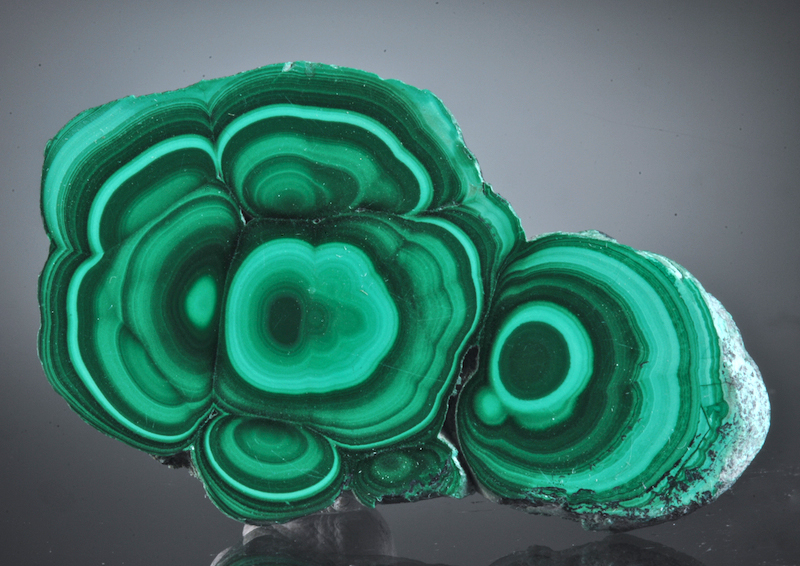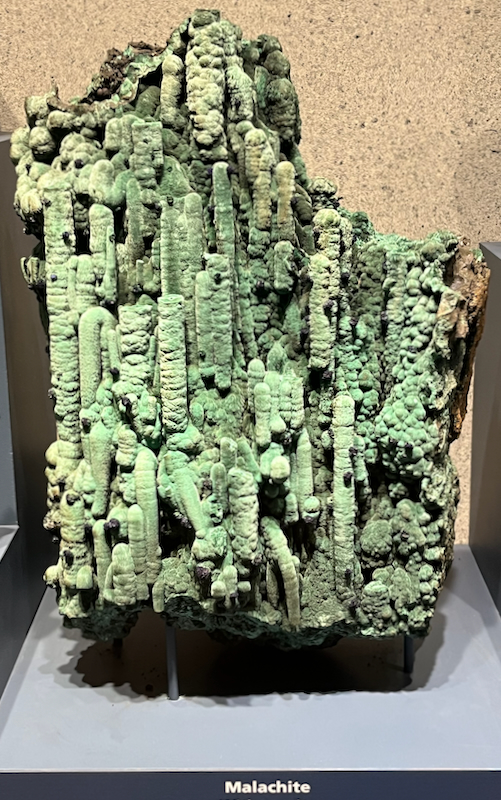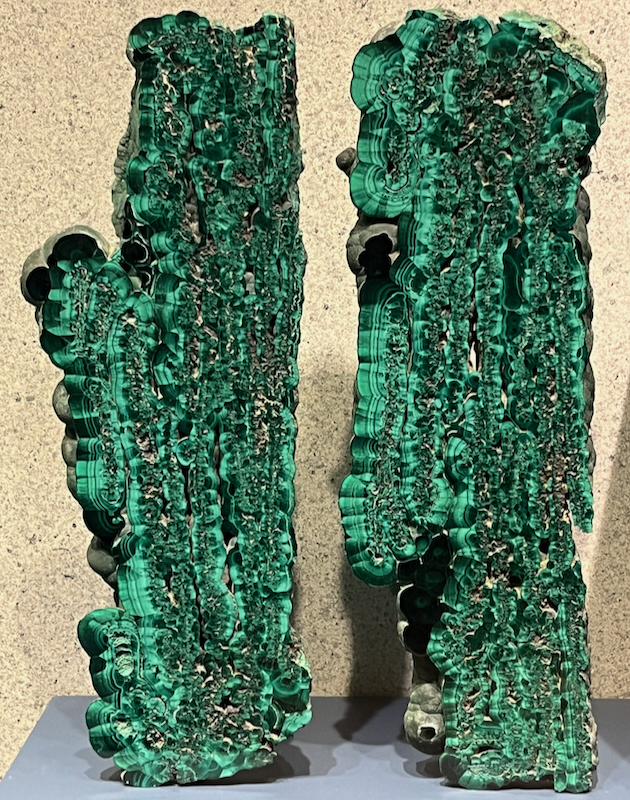Malachite
One of the greenest minerals you’ll find is malachite. It’s not yellow-green like olivine or blue-green like amazonite, it’s GREEN. Malachite is formed when natural acid or water causes copper to break down or “oxidize.” That’s why malachite is considered a copper oxide, with copper (Cu) and oxygen (O) in its formula. It’s also considered a “secondary mineral” because it’s the result of a “primary mineral” (copper) breaking down into something else. That process can produce a bunch of different minerals from copper, but they’re almost always green or blue. Malachite can form in several different ways. It can look like a velvety coating, it can form balls like pectolite, it can create sharp-edged crystals that look suspiciously like azurite, hmm…, or it can form large swirly masses of all different shades of the same green color. The swirly masses, which these days almost all come from Africa, are often turned into stone carvings, especially African animals, such as elephants. As for the suspiciously azurite-like crystals of malachite, those are called pseudomorphs, and they occur when you have an azurite crystal that turns entirely into malachite, but it still has an azurite crystal’s shape (morph means “form” in Greek).
| Formula | Group or Type | Shape | Hardness | Specific Gravity | Streak | Luster |
|---|---|---|---|---|---|---|
| Cu2(CO3)(OH)2 | — | Monoclinic | 3.5–4 | 3.9–4 | Light green | Vitreous, silky, dull, or earthy |




